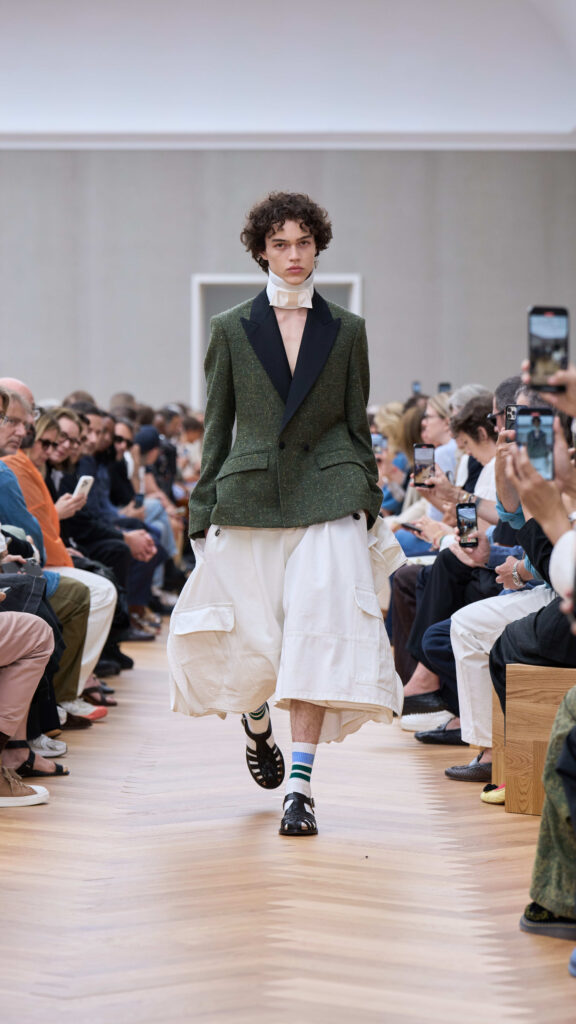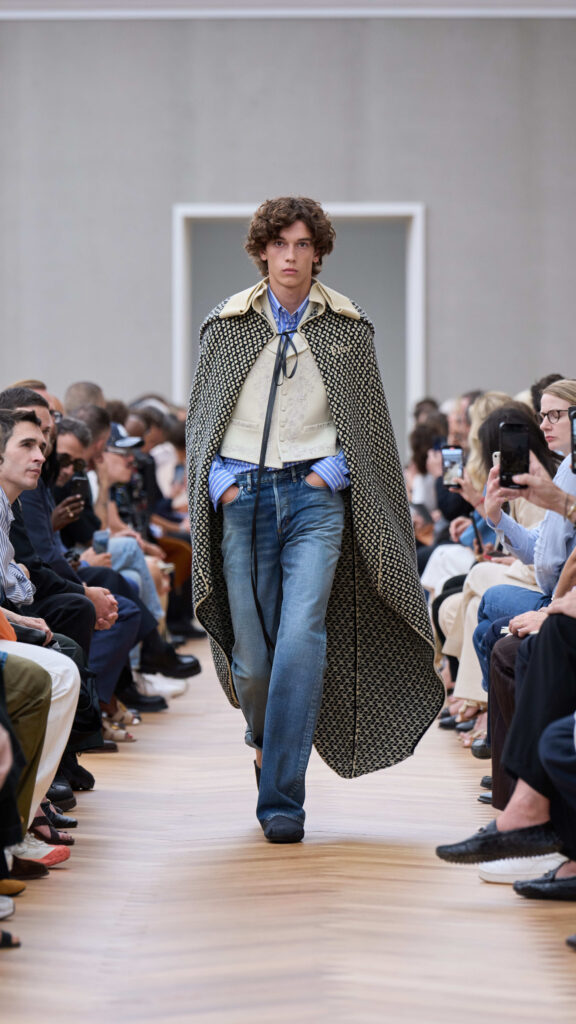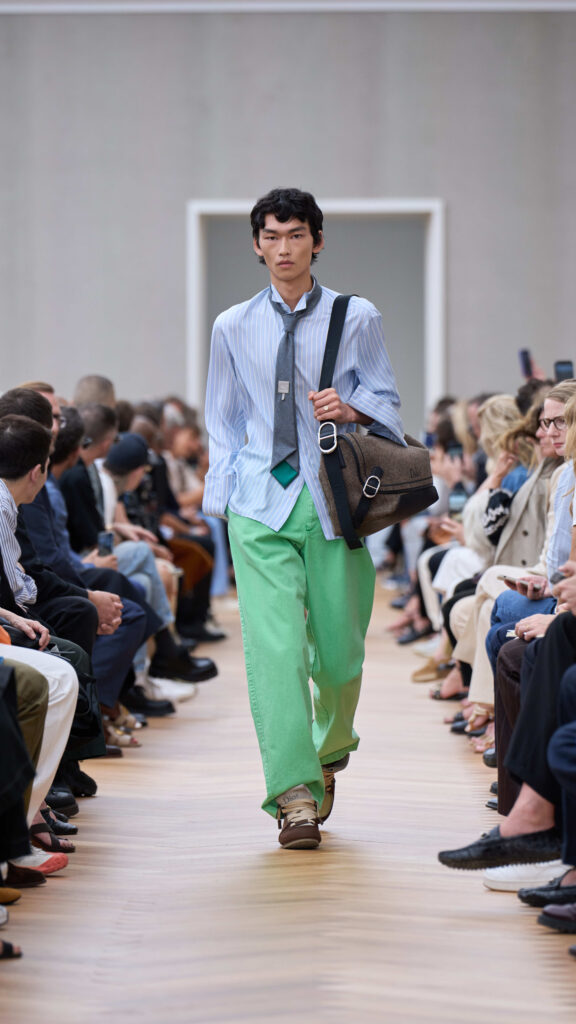Jonathan Anderson’s Dior: from Chardin to Dracula, a fresh spin on iconic codes
The most noteworthy moments from Dior Homme spring/summer 2026 in Paris.

JONATHAN ANDERSON’S debut at Dior reads as a careful yet quietly radical reworking of the house’s heritage, blending history with an understated, modern edge. The spring/summer 2026 menswear collection unfolded at Les Invalides in Paris, inspired by Berlin’s Gemäldegalerie, walls dressed with Jean Siméon Chardin’s still lifes – a nod to sincerity and intimacy over grand spectacle, in the spirit of Chardin’s celebration of the ordinary.
Anderson reinterprets Dior’s classic codes, pulling them apart and stitching them back together for a new generation. The Bar jacket, tailcoats and 18th- and 19th-century waistcoats are revived with fresh relevance. Roses, rococo flourishes and Monsieur Dior’s fascination with British culture resurface as modern motifs. Even the icons get a twist: the Dior Book Tote now features literary covers, a crossbody bag nods to Dracula, and the Lady Dior, reimagined by Sheila Hicks, becomes a piece of art in itself.
Standout looks made Anderson’s point clear. A velvet or tweed tailcoat thrown over faded jeans gave old-world formality a rough, casual twist. A bubblegum waistcoat with fringe, worn with khaki shorts, turned Rococo softness into something sharp and boyish. Denim teamed with an embroidered vest and check cape pushed folklore into streetwear territory — everyday ease with a hit of gothic drama. And then there was the pale gold coat and undone shirt, bow tie just holding it together: eveningwear stripped back, quiet but far from soft.
More than a collection, it’s a reminder that style is equal parts confidence and play – an invitation to dress with ease and imagination. Anderson invites spontaneity and youth into the Dior archive, mixing relics of the past with playful invention, empathy stitched through elegance, and a quiet celebration of reinvention.
Dior spring/summer 2026









A version of the article was originally published here.
Related:























